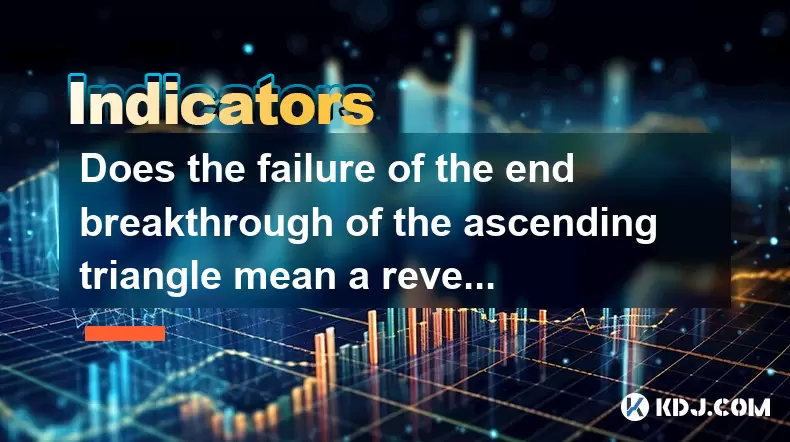-
 Bitcoin
Bitcoin $108,092.5658
-0.99% -
 Ethereum
Ethereum $2,546.4530
-1.12% -
 Tether USDt
Tether USDt $1.0000
0.01% -
 XRP
XRP $2.2676
0.12% -
 BNB
BNB $659.1616
-0.30% -
 Solana
Solana $148.8297
-1.97% -
 USDC
USDC $1.0000
0.02% -
 TRON
TRON $0.2874
-0.30% -
 Dogecoin
Dogecoin $0.1676
-3.64% -
 Cardano
Cardano $0.5765
-1.73% -
 Hyperliquid
Hyperliquid $37.2069
-6.18% -
 Bitcoin Cash
Bitcoin Cash $497.9918
-0.10% -
 Sui
Sui $2.8427
-2.26% -
 Chainlink
Chainlink $13.2689
-2.06% -
 UNUS SED LEO
UNUS SED LEO $9.0541
0.15% -
 Stellar
Stellar $0.2487
-0.92% -
 Avalanche
Avalanche $17.7710
-3.09% -
 Shiba Inu
Shiba Inu $0.0...01167
-1.28% -
 Toncoin
Toncoin $2.7488
-2.80% -
 Hedera
Hedera $0.1559
-2.28% -
 Litecoin
Litecoin $85.8945
-2.48% -
 Monero
Monero $316.0985
-2.09% -
 Dai
Dai $1.0001
0.02% -
 Polkadot
Polkadot $3.3481
-1.83% -
 Ethena USDe
Ethena USDe $1.0000
0.00% -
 Bitget Token
Bitget Token $4.2910
-3.04% -
 Uniswap
Uniswap $7.4131
-0.09% -
 Aave
Aave $280.9266
-2.67% -
 Pepe
Pepe $0.0...09816
-3.18% -
 Pi
Pi $0.4557
-2.29%
Does the failure of the end breakthrough of the ascending triangle mean a reversal of trend?
Jun 30, 2025 at 04:50 am

Understanding the Ascending Triangle Pattern
The ascending triangle is a common chart pattern in technical analysis, typically seen as a continuation pattern indicating a potential upward breakout. It forms when the price creates higher lows while encountering resistance at a horizontal level. This consolidation phase suggests that buyers are becoming increasingly aggressive, pushing prices upward against consistent selling pressure at the resistance line.
In this pattern, the convergence of rising support and flat resistance lines creates a triangular shape on the chart. Traders often anticipate a breakout either upwards or downwards, depending on how the price reacts near these boundaries. The pattern is considered valid only if there are at least two touches on both the ascending support and the horizontal resistance levels.
Important: The ascending triangle is not inherently bullish or bearish—it depends on the direction of the breakout.
What Happens When the Breakout Fails?
When the price fails to break out successfully from an ascending triangle, especially after testing the resistance multiple times, it raises concerns about the strength of the bullish momentum. A failed breakout can be identified when the price initially moves beyond the resistance or support but then quickly reverses and closes back within the triangle.
This phenomenon may indicate a shift in market sentiment. If the price breaks below the ascending support trendline, particularly with strong volume, it could signal a bearish reversal rather than a continuation. However, traders must remain cautious and avoid making impulsive decisions based solely on one failed breakout.
- Volume confirmation is crucial during a breakout failure. A significant increase in volume on the downside breakout strengthens the case for a reversal.
- Price retest of the broken support level can provide additional confirmation of the new downtrend.
- Timeframe considerations also play a role—short-term false breakouts may occur even within a larger uptrend.
Analyzing Market Psychology Behind the Failure
A failed breakout from an ascending triangle reflects changing dynamics between buyers and sellers. Initially, the pattern suggests that demand is increasing, as evidenced by progressively higher lows. However, when the price repeatedly hits the resistance without breaking through, it signals that sellers are stepping in at that level with growing conviction.
Eventually, if the resistance proves too strong, buyers may lose confidence and begin exiting their positions. This leads to increased selling pressure, which might result in a breakdown below the rising support line. At this point, former support levels can turn into resistance zones, reinforcing the bearish shift in sentiment.
Important: Psychological factors such as trader expectations and institutional behavior significantly influence the outcome after a failed breakout.
How to Trade After a Failed Ascending Triangle Breakout
If you're considering entering a trade following a failed breakout from an ascending triangle, certain criteria should guide your decision-making process:
- Entry point: Wait for a clear close below the ascending support line before initiating a short position.
- Stop-loss placement: Set stop-loss orders slightly above the previous resistance level to manage risk effectively.
- Take-profit target: Measure the height of the triangle and project it downward from the breakout point to estimate a potential downside target.
- Confirmation tools: Use candlestick patterns like bearish engulfing or dark cloud cover to confirm the reversal.
- Indicators: Incorporate moving averages or RSI divergence to filter out false signals and improve accuracy.
Important: Never trade solely based on chart patterns—always use supporting indicators and sound risk management principles.
Historical Examples in Cryptocurrency Markets
Several cryptocurrencies have exhibited ascending triangles followed by failed breakouts and subsequent reversals. For example, Ethereum (ETH) showed a textbook ascending triangle formation in early 2021, which eventually broke down despite multiple attempts to push higher. The breakdown was confirmed with increased volume and led to a significant correction.
Similarly, Litecoin (LTC) formed an ascending triangle during its 2020 rally. Despite initial optimism among traders expecting a breakout, LTC eventually broke below support and entered a multi-week downtrend.
These examples highlight the importance of understanding context and confirming signals before acting on chart patterns alone.
Important: Historical performance does not guarantee future results, but studying past patterns helps refine trading strategies.
Frequently Asked Questions
Q: Can the ascending triangle still be valid after a failed breakout?
Yes, sometimes the pattern may need more time to consolidate. A re-entry into the triangle after a false breakout doesn't necessarily invalidate the original structure. Traders should reassess support and resistance levels before making further decisions.
Q: How long can an ascending triangle last in crypto markets?
There's no fixed duration, but most ascending triangles form over periods ranging from a few days to several weeks. Shorter timeframes tend to produce less reliable patterns due to increased volatility in cryptocurrency markets.
Q: Is volume always necessary to confirm a failed breakout?
While volume adds credibility to any breakout or breakdown, it's not always present. In some cases, low-volume breakdowns can still lead to sustained trends, especially in highly liquid assets like Bitcoin or Ethereum.
Q: What other patterns resemble the ascending triangle?
Similar patterns include the symmetrical triangle and the descending triangle. The key difference lies in the orientation of support and resistance lines. Each has distinct implications for future price movement.
Clause de non-responsabilité:info@kdj.com
Les informations fournies ne constituent pas des conseils commerciaux. kdj.com n’assume aucune responsabilité pour les investissements effectués sur la base des informations fournies dans cet article. Les crypto-monnaies sont très volatiles et il est fortement recommandé d’investir avec prudence après une recherche approfondie!
Si vous pensez que le contenu utilisé sur ce site Web porte atteinte à vos droits d’auteur, veuillez nous contacter immédiatement (info@kdj.com) et nous le supprimerons dans les plus brefs délais.
-
 ICNT Échangez maintenant
ICNT Échangez maintenant$0.3182
30.31%
-
 M Échangez maintenant
M Échangez maintenant$0.2011
23.43%
-
 SOLO Échangez maintenant
SOLO Échangez maintenant$0.3788
17.55%
-
 HSK Échangez maintenant
HSK Échangez maintenant$0.7010
17.49%
-
 SHX Échangez maintenant
SHX Échangez maintenant$0.0116
15.42%
-
 COREUM Échangez maintenant
COREUM Échangez maintenant$0.1392
8.59%
- Bitcoin Solaris Market Launch: A New Dawn or Just Another Altcoin?
- 2025-07-08 20:30:12
- Bitcoin, Memecoin Mania, and the All-Time High Hunt: What's Next?
- 2025-07-08 20:30:12
- Byrq Coin: Scam or Savior? A Deep Dive Review
- 2025-07-08 20:50:12
- Shiba Inu's Burn Rate Bonanza: Can Crypto Burns Ignite a Price Rally?
- 2025-07-08 20:50:12
- XLM Price Prediction: Is Stellar Ready for a Breakout?
- 2025-07-08 19:10:13
- Memecoin Mania: V2EX, Pump.fun, and the Wild West of Crypto
- 2025-07-08 19:50:12
Connaissances connexes

How to trade Dogecoin based on funding rates and open interest
Jul 07,2025 at 02:49am
<h3>Understanding Funding Rates in Dogecoin Trading</h3><p>Funding rates are periodic payments made to either long or short traders ...

What is the 'God Mode' indicator for Dogecoin
Jul 07,2025 at 04:42pm
<h3>Understanding the 'God Mode' Indicator</h3><p>The 'God Mode' indicator is a term that has emerged within cryptocurrency trading ...

Using Gann Fans on the Dogecoin price chart
Jul 07,2025 at 09:43pm
<h3>Understanding Gann Fans and Their Relevance in Cryptocurrency Trading</h3><p>Gann Fans are a technical analysis tool developed b...

How to spot manipulation on the Dogecoin chart
Jul 06,2025 at 12:35pm
<h3>Understanding the Basics of Chart Manipulation</h3><p>Chart manipulation in the cryptocurrency space, particularly with Dogecoin...

Dogecoin market structure break explained
Jul 07,2025 at 02:51am
<h3>Understanding the Dogecoin Market Structure</h3><p>Dogecoin, initially created as a meme-based cryptocurrency, has evolved into ...

How to backtest a Dogecoin moving average strategy
Jul 08,2025 at 04:50am
<h3>What is a Moving Average Strategy in Cryptocurrency Trading?</h3><p>A moving average strategy is one of the most commonly used t...

How to trade Dogecoin based on funding rates and open interest
Jul 07,2025 at 02:49am
<h3>Understanding Funding Rates in Dogecoin Trading</h3><p>Funding rates are periodic payments made to either long or short traders ...

What is the 'God Mode' indicator for Dogecoin
Jul 07,2025 at 04:42pm
<h3>Understanding the 'God Mode' Indicator</h3><p>The 'God Mode' indicator is a term that has emerged within cryptocurrency trading ...

Using Gann Fans on the Dogecoin price chart
Jul 07,2025 at 09:43pm
<h3>Understanding Gann Fans and Their Relevance in Cryptocurrency Trading</h3><p>Gann Fans are a technical analysis tool developed b...

How to spot manipulation on the Dogecoin chart
Jul 06,2025 at 12:35pm
<h3>Understanding the Basics of Chart Manipulation</h3><p>Chart manipulation in the cryptocurrency space, particularly with Dogecoin...

Dogecoin market structure break explained
Jul 07,2025 at 02:51am
<h3>Understanding the Dogecoin Market Structure</h3><p>Dogecoin, initially created as a meme-based cryptocurrency, has evolved into ...

How to backtest a Dogecoin moving average strategy
Jul 08,2025 at 04:50am
<h3>What is a Moving Average Strategy in Cryptocurrency Trading?</h3><p>A moving average strategy is one of the most commonly used t...
Voir tous les articles

























































































